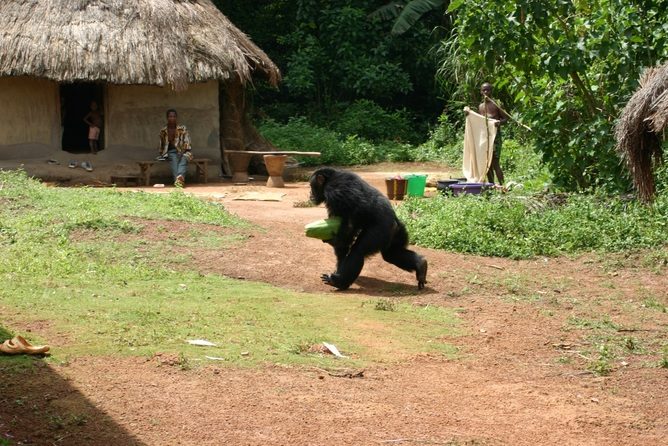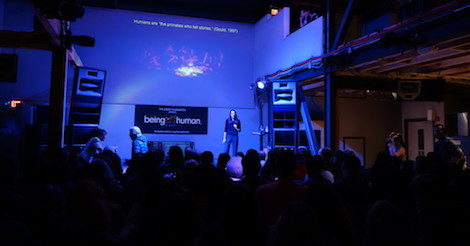50th Anniversary | Guest Post
By Sam Gochman
Opportunities like demonstrating our Tarsier Goggles at The Leakey Foundation’s 50th anniversary gala do not come often. So when we were invited to attend, we happily accepted and made our way from Dartmouth College to the St. Regis. The event proved to be informative from both anthropological and design perspectives, not to mention a great celebration!

Tarsiers are small (tennis ball-sized) nocturnal primates that have the largest eyes relative to body size of any known living or extinct vertebrate. Their enormous eyes are thought to enhance visually-guided predation by increasing visual sensitivity in dim light and contrasting an object of focus with a progressive depth of field. In addition, protanopia (red-green color blindness) reduces color noise.
Our project uses virtual reality to contrast visual properties of tarsiers and humans and move beyond current educational methods toward a more personal, visceral experience. As a tool for educational outreach and science communication in the classroom and museum settings, it helps experientially teach about the impacts of natural selection and alternative optical systems. As a tool for introspection, it encourages users to question the limited extent to which their perceptual understandings of their surroundings is shared with other organisms.


Denise Su, Curator and Head of Paleobotany & Paleoecology at the Cleveland Museum of Natural History, explores the world of the tarsier Photo by Sam Gochman.
At the Gala, we had the chance to socialize with prominent players in the field, learn about The Leakey Foundation’s history, and hear about research at the frontiers of anthropology. At the after-party, we brought Tarsier Goggles to anthropologists and entrepreneurs alike as a “Young Professionals” project alongside Lenovo. We had lots of fun sharing our project, and we also used that time to conduct user testing with our system. From the event, we learned about new ways to improve and streamline the user experience, and we hope to continue to make it more self-guided and polished in the future. This will be especially important as we move to collaborate with a local natural history museum.

We thank The Leakey Foundation for giving us the opportunity to engage with such a prominent institution and share our work with the public.


